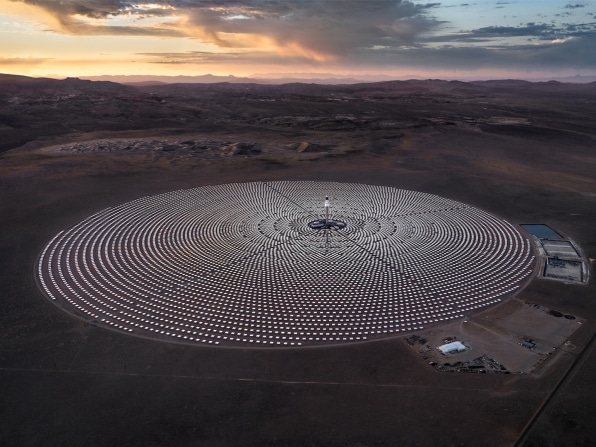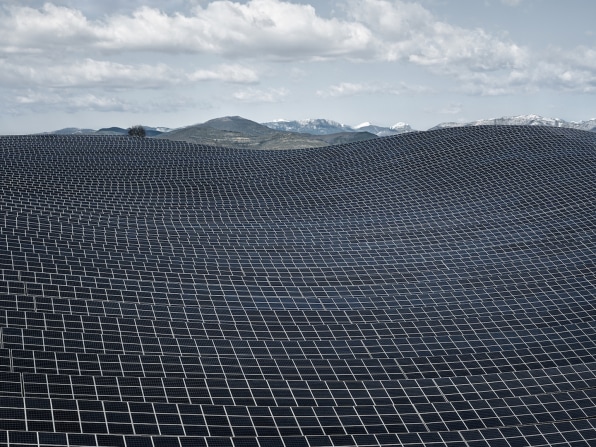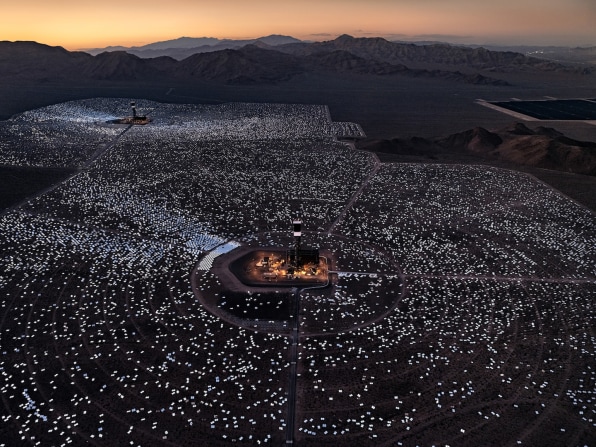- | 8:00 am
See these dazzling solar panels from a bird’s-eye view
In his new series, photographer Tom Hegen paints a captivating portrait of what the world would look like from above if it were powered by renewable energy.

Solar panels have long been criticized for being an eyesore. But what if you could see them from another angle? Say, 10,000 feet high?
Tom Hegen has become the master of aerial photography, turning salt ponds, coal mines, and melting glaciers into geometric landscapes. Much of his work is focused on visualizing the devastating impact of climate change on Earth, but the German photographer’s latest series takes a more positive outlook. The Solar Power Series depicts solar farms in all their glory—painting a captivating portrait of what the world would look like if it is powered by renewable energy.

[Photo: Tom Hegen]
Solar Power Series features five solar plants across the U.S., France, and Spain. “I was looking for plants that are the first of their kind in terms of the technique used, and other experimental projects that have a strong characteristic in response to the landscape,” he says. The first solar plant he ever photographed for the series was in Southern France, where he captured a stunning field of solar panels built on top of a rolling hill. Completed in 2011, the so-called Les Mées solar farm counts almost 80,000 solar panels spread across 89 acres. “The panels here look like endless waves that are rolling in the landscape,” he says.

[Photo: Tom Hegen]
Les Mées is the only traditional solar plant portrayed in the series. For the others, Hegen focused on so-called solar thermal power plants, where thousands of mirrors, called heliostats, help reflect and concentrate the sun on a central tower. In most cases, the sun heats liquid salts inside the tower, which then uses it to boil water and drive turbines that generate electricity. In California’s Mojave Desert, for example, the Ivanpah solar power facility generates enough electricity to power 140,000 homes. With 173,500 heliostats, it is the largest solar thermal facility in the world, cutting 400,000 tons of CO2 emissions per year.

[Photo: Tom Hegen]
When captured from a helicopter, heliostats take on a graphic quality akin to an alien settlement. “Seeing the plants from the air is extremely captivating,” says Hegen. “Especially the early morning light makes a nice contrast and reflection in the mirrors that somehow have something human in them, like a Mecca of mirrors [or] a concert crowd.”In 2020, renewable energy generated about 21% of all electricity generated in the U.S. The U.S. Energy Information Administration estimates that number will increase to 44% by 2050, mainly due to wind and solar power. This growth will have an inevitable impact on the landscape. “This project is a documentation of what the future could look like if most of the energy we use is generated by the power of the sun,” Hegen says. “The work should also create awareness of alternative energy sources.”




































